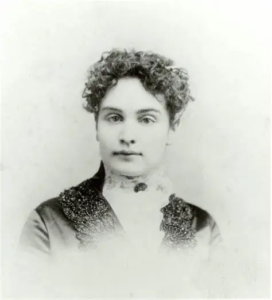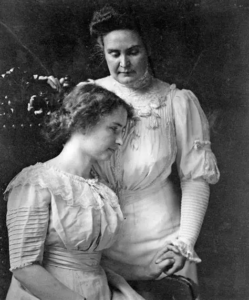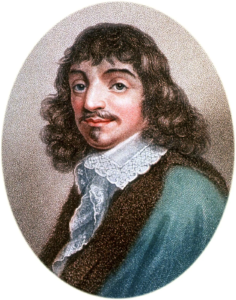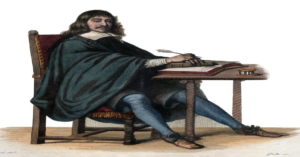Savitri Bai Phule: India’s First Female Teacher

History is often written by those in positions of power, leaving the voices of marginalized communities silenced or erased. Yet, some individuals break through the walls of prejudice and oppression to carve a place not only for themselves but also for generations to come. Savitri Bai Phule, widely recognized as India’s first female teacher, stands as one such towering figure. She was not merely a teacher but also a poet, social reformer, and revolutionary whose work challenged entrenched caste and gender hierarchies in 19th-century India.
To call her “India’s first female teacher” is both accurate and incomplete. It captures her pioneering role in women’s education but does not fully convey the courage, vision, and radical activism that defined her life. Her story is one of resilience against a deeply patriarchal society, one that treated women as inferior and untouchable communities as subhuman. By choosing education as her weapon, Savitribai fought against oppression and planted the seeds of equality and justice.
This essay explores her life, struggles, contributions, and enduring legacy in around 2500 words.
The Context: India in the 19th Century
Patriarchy and Gender Inequality
In the early 19th century, women in India—especially from lower castes—were systematically denied education. Practices like child marriage, female infanticide, and enforced widowhood were widespread. Women were confined to domestic spaces and expected to remain silent and submissive. The very idea of a woman being educated was seen as a threat to tradition.
Caste Oppression
The caste system further intensified social inequality. Dalits and other marginalized communities were denied access to temples, schools, and public spaces. Education was restricted to the upper castes, ensuring that privilege was maintained across generations.
Savitri Bai Phule – The Colonial Backdrop
Under British rule, India was undergoing cultural churn. Social reformers such as Raja Ram Mohan Roy and Ishwar Chandra Vidyasagar had started questioning regressive practices. However, these reform movements were often led by upper-caste men, and their scope sometimes excluded the lived realities of Dalits and women.
In this landscape of exclusion, Savitribai Phule and her husband Jyotirao Phule emerged as visionaries who centered education as the pathway to liberation for both women and the oppressed castes.
Early Life of Savitribai Phule
Savitribai was born on 3 January 1831 in Naigaon, a small village in Maharashtra. She belonged to the Mali caste, a community traditionally engaged in gardening and agriculture. At the age of nine, she was married to Jyotirao Phule, who was just 13 at the time. Child marriage was common, and like many girls of her time, Savitribai’s life could have been confined to household chores.
However, her husband recognized her potential and encouraged her education. Jyotirao himself was a rare progressive voice, but what set Savitribai apart was her willingness to embrace learning despite ridicule and resistance. She pursued her studies initially at home under Jyotirao’s guidance and later trained at a teacher’s training institution in Pune and then in Ahmednagar.
Her journey from an illiterate child bride to India’s first female teacher was nothing short of revolutionary.
Pioneering Education for Girls
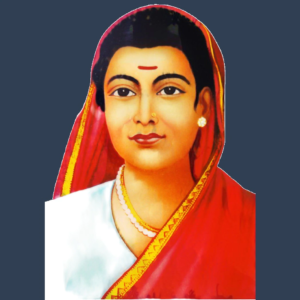
In 1848, Savitribai Phule, along with Jyotirao, started the first girls’ school in Bhide Wada, Pune. At a time when even upper-caste men opposed female education, this was a radical act.
Resistance and Hostility
The hostility they faced was immense. Conservative families and orthodox Brahmins claimed that educating women would corrupt society. Savitribai was often abused on her way to school—pelted with stones, mud, and cow dung. But she carried an extra saree with her so she could change upon reaching school, continuing her work with dignity.
Pedagogical Innovation
Unlike traditional rote-learning methods, the Phules emphasized critical thinking, reasoning, and practical knowledge. They introduced subjects such as mathematics, science, and social studies, ensuring that girls received a holistic education. Their schools were inclusive, admitting children from marginalized castes and challenging the monopoly of upper-caste education.
Savitri Bai Phule Expanding Movement
By the early 1850s, Savitribai and Jyotirao had established multiple schools in Pune. Records suggest that their schools were more successful than government schools at the time, both in enrollment and outcomes.
Savitri Bai Phule: A Social Reformer Beyond Education
Although education remained central to her activism, Savitribai’s contributions extended far beyond classrooms.
Fighting Caste Discrimination
Savitribai and Jyotirao opened the Satyashodhak Samaj (Society of Truth Seekers) in 1873, which challenged Brahminical dominance and caste-based inequality. Through this platform, Savitribai worked to promote social equality, inter-caste marriages, and the rights of oppressed communities.
Champion of Women’s Rights
Savitribai strongly opposed child marriage and fought for the rights of widows, who were often subject to inhumane treatment. She, along with Jyotirao, started a home for widows and encouraged widow remarriage—an act seen as scandalous at the time.
She also established the Balhatya Pratibandhak Griha (home to prevent infanticide), where widows and pregnant women could find shelter and support. By creating safe spaces for women, she challenged the stigma that society attached to them.
Savitri Bai Phule – First Woman Poet
Savitribai was also a poet whose writings reflected her revolutionary spirit. In her poetry collections such as Kavya Phule and Bavan Kashi Subodh Ratnakar, she urged people to educate themselves, rise against oppression, and embrace equality. Her verses were both accessible and inspiring, giving voice to the voiceless.
Partnership with Jyotirao Phule
One of the remarkable aspects of Savitribai’s journey was her partnership with Jyotirao. Unlike many reformers of their time, they worked as equals. Jyotirao recognized Savitribai not just as his wife but as a comrade in the struggle for social justice.
Together, they defied societal norms, transforming their personal relationship into a public movement. Their bond demonstrates how social change often requires solidarity between men and women, each empowering the other.
Savitri Bai Phule Challenges and Criticism
The path was not easy. The Phules were ostracized by their own families. Neighbors and relatives accused them of corrupting society. Upper-caste elites mocked and threatened them, while religious leaders declared them heretics.
Despite this, Savitribai did not retreat. Her resilience in the face of abuse symbolized her defiance of patriarchal and casteist structures. She once said through her writings that “education is the lamp that can dispel darkness,” showing her unshakable faith in the transformative power of knowledge.
Savitri Bai Phule Life and Humanitarian Work
After Jyotirao’s death in 1890, Savitribai continued his work with undiminished energy. She took charge of the Satyashodhak Samaj and remained an active reformer.
During the plague epidemic of 1897, she worked tirelessly, setting up care centers for the affected. While serving patients, she contracted the disease herself and passed away on 10 March 1897. Even in death, she embodied sacrifice and service.
Legacy of Savitri Bai Phule
A Pioneer in Education
Savitribai Phule’s most enduring contribution is her role as a pioneer of women’s education in India. Today, millions of girls in India attend school and college because of the path she created against overwhelming odds.
A Voice for the Marginalized
She stood at the intersection of caste and gender oppression, addressing both with equal urgency. This makes her not only India’s first female teacher but also one of the first intersectional feminists of the country.
Inspiration for Movements
Her life and writings continue to inspire Dalit movements, women’s movements, and educational reforms. Statues, memorials, and institutions across India now honor her legacy, and her birthday is celebrated as Women’s Education Day in some regions.
Savitri Bai Phule: Beyond the Icon
While it is easy to view Savitribai as an icon or symbol, it is equally important to see her humanity. She was a woman of flesh and blood who endured insults, isolation, and physical hardships. Imagine walking to school every day knowing that people would throw filth at you. Imagine starting each day knowing that your dignity would be under assault.
Yet, she chose not to give up. Her story is one of everyday courage, not just grand gestures. She reminds us that social change often comes from consistent, quiet acts of defiance—teaching a child, writing a poem, standing by another woman in distress.
Savitri Bai Phule Relevance Today
More than a century after her death, Savitribai’s vision remains deeply relevant.
- Education for All: While literacy has improved, gender gaps and caste-based disparities in education persist. Her call for universal, inclusive education is unfinished work.
- Women’s Empowerment: Issues like child marriage, gender-based violence, and unequal access to opportunities still affect women in India. Savitribai’s struggle reminds us of the need for vigilance.
- Caste Discrimination: Despite constitutional safeguards, caste-based discrimination and violence continue. Savitribai’s commitment to equality is a moral compass for today’s society.
Savitri Bai Phule Conclusion
Savitribai Phule’s life is not merely a historical episode; it is a living legacy. She was India’s first female teacher, yes, but also much more—a radical reformer, a poet of the oppressed, a caregiver in times of crisis, and a fearless challenger of injustice.
In an age when both caste and patriarchy colluded to keep women and marginalized communities in darkness, she lit the lamp of education. That lamp continues to burn, guiding us toward a more just and equitable society.
Her story teaches us that true education is not just about literacy; it is about awakening the human spirit to dignity, equality, and freedom. In honoring Savitribai Phule, we honor the struggles of all those who dared to dream of a better world.


